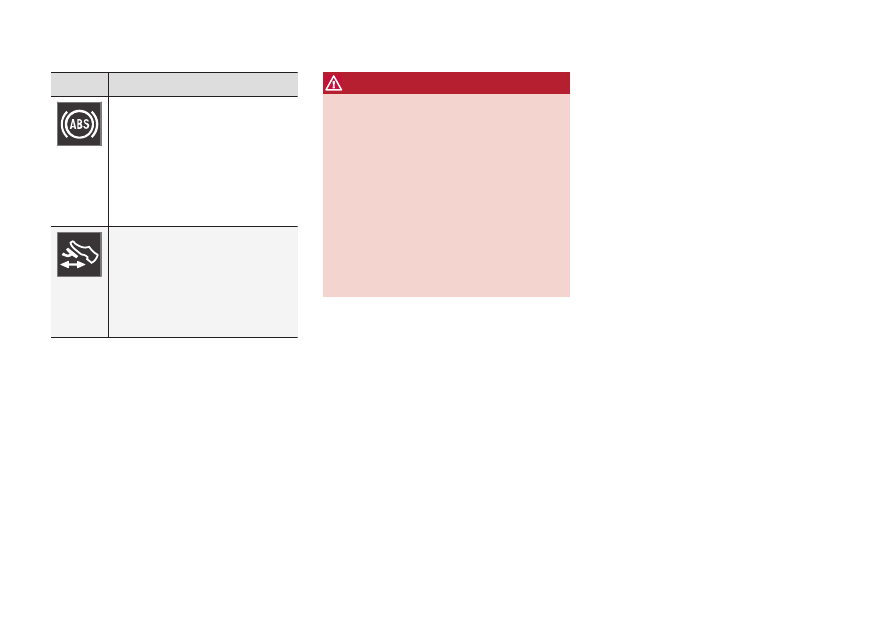Volvo V90 Twin Engine (2018 year). Manual - part 25

STARTING AND DRIVING
429
Symbol
Specification
Constant glow for 2 seconds when
the engine is started: Automatic
function check.
Constant glow for more than 2
seconds: Fault in the ABS system.
The car's normal brake system is
still working, but without the ABS
function.
If the message
Brake pedal
Cha-
racteristics changed Service
required
is shown, the system for
"Brake-by-wire" is disengaged. The
brake pedal engages deeper and a
higher pedal pressure is required
to achieve braking effect.
WARNING
If both the warning lamps for brake fault and
ABS fault illuminate at the same time, a fault
has occurred in the brake system.
•
If the level in the brake fluid reservoir is
normal at this stage, drive carefully to the
nearest workshop and have the brake
system checked - an authorised Volvo
workshop is recommended.
•
If the brake fluid is below the MIN level in
the brake fluid reservoir, do not drive fur-
ther before topping up the brake fluid.
The reason for the loss of brake fluid
must be investigated.
Related information
•
•
•
•
Emergency brake lights (p. 429)
•
Hybrid related information in the driver dis-
play (p. 99)
Emergency brake lights
Emergency brake lights are activated to alert
vehicles behind about heavy braking. The func-
tion means that the brake light flashes instead of
- as in normal braking - shining with a constant
glow.
The emergency brake lights are activated during
heavy braking or if the ABS system is activated at
high speeds. After emergency braking to a low
speed, the brake lights return from flashing to the
normal constant glow. The car's hazard warning
flashers are activated at the same time. These
flash until the driver accelerates the car to a
higher speed again or switches off the hazard
warning flashers.
Related information
•
•
Hazard warning flashers (p. 145)
•